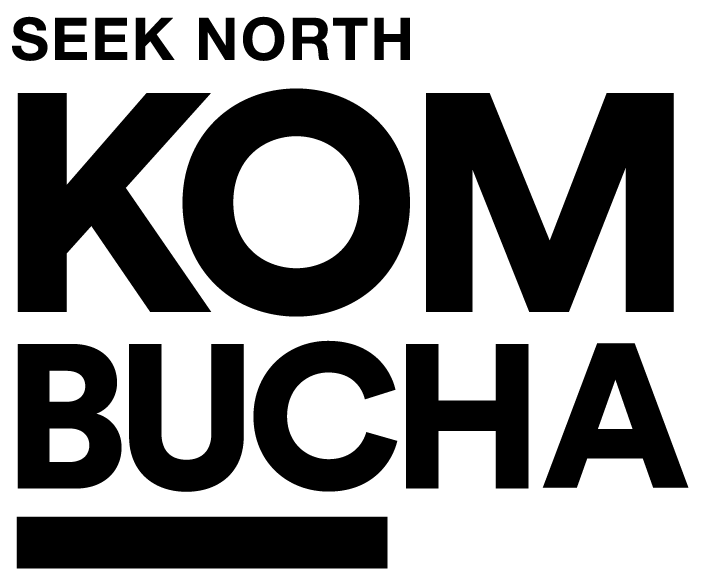The Importance of Balanced Eating
How to be #gutpositive and confident about your dinner
Pretending there’s debate and confusion on what makes a healthy diet is only good for food manufacturers, and people with books to sell. The answers have been in for a while, and we’re about to tell you.
If we’re completely honest, isn’t it a bit crazy that we have to make a blog about how to eat? It is one of the most essential functions for any living thing, to ingest things that make it grow and thrive, but yet, we have such a hard time trying to do it right. We’re bombarded by innumerable ads, dubious advice about health, nutrition, and various supposed cures for this and that - it can be very hard to sort out fact from fiction. So, we’re going to help a bit.
Now first off, you know what fiends we are about fermented foods and drink. Probiotics and the fermentation that helps create them are a wonderful addition to a balanced diet. But kombucha, while a great go-to, aren’t the only ways to add these. Fruits and veggies (and we all know how good these are) can also be pickled, i.e., fermented, which gives a double-dose of healthy veggies and wonderful yeasts and friendly bacteria. Kefir is another great go-to for a double-whammy of healthy, calcium and protein rich dairy, with a great dose of probiotics, as it’d be best described as a fermented yogurt drink.
But what about the issue that you’re faced with multiple times a day? Your plate.
Quick review. There are 6 nutrients necessary for survival - carbohydrates, proteins, lipids/fats, vitamins, minerals, water. Proteins, carbs, and fats are classified as macronutrients (large, overarching categories of nutrients that make up a bigger portion of our diets), while vitamins and minerals are micronutrients, because they are smaller components of a balanced diet, and only required in smaller amounts. Water, well… is water, but also considered a macronutrient.
A balanced diet includes adequate amounts of all of these, but the complications come from the fact that there really is no perfect diet. We’re billed a lot of promises and hype seemingly advertising the perfect diet, but science has shown time and time again that any set, restrictive diet - paleo, low-carb, low-fat, Mediterranean - does not hold all the answers, and can often do more harm than good. One-size-fits-all diets that make sweeping recommendations and promising fantastic results can’t take into individual people’s conditions and nutritional needs, and at worst, can cause deficiencies or harm, and at best, the results are all lost when you try to go off said diet.
Four out of ten of the leading causes of death in the US (heart disease, cancer, stroke, diabetes) are directly attributable to diet. So, the stakes on your plate are indeed high, but the answers are more simple than you’ve been led to believe.
Healthy Eating Plate- Harvard School of Public Health
This is the Healthy Eating plate, designed by The Harvard School of Public Health and editors of Harvard Health Publications. This simple diagram was designed to fill in gaps and deficiencies left by the USDA’s My Plate recommendations. This is science-backed, research-fueled, factual recommendations from one of the most knowledgeable, reputable sources you can name. And this is pretty easy, right? Eat a variety of foods, make your proteins and fats healthy, your carbs mainly whole grain, limit processed foods, and load up on a rainbow of fruits and vegetables. In labs, this has been the closest answer to “the perfect diet” that there ever has been.
The recommendations, in detail, center around making your grains whole grain, and to be ¼ of your plate/intake, along with the other ¼ being healthy proteins that focus on fish, poultry, beans, and nuts rather than fatty or processed meats. Half of your plate/intake should be taken up by fruits and vegetables, not including potatoes, with fruits being a smaller portion of that ½ since we don’t need as much fruit as we do vegetables per day. Pictured, is a little bottle of oil encouraging healthy fats and plant oils rather than things like butter or trans fat. Drink, and focus on, water, but you can also allow tea or coffee, with little sugar, avoiding sugary drinks altogether. Make sure to stay active, exercising 30 minutes a day. That’s it. One simple picture, and this paragraph.
Michael Pollan, the famous science and food journalist came up with a seven word diet that actually bears itself out in research and is reflected largely in The Healthy Eating Plate: “Eat food [read that, real, whole, unprocessed food]. Not too much. Mostly plants.” This, an entire diet, big enough to fit on a small tattoo (not that we’re recommending this for your next ink idea).
There’s little confusion about how to eat healthy, however to hear the news, read the books, and listen to people talk, you’d think there was a huge debate. This is wonderful for the diet makers and food companies trying to sell you things, but not so great for you as you sit down to eat.
We all like doughnuts, or fries, or nachos, or beer, or whiskey, so it’s not easy. But it actually is pretty simple, and with little doubt. So, the next time someone tries to tell you about the next best diet craze, or the food trucks advertise their funnel cakes, just chug your booch, while you smile and nod, and politely head for the salad bar. Smells don’t hurt anyone though.


